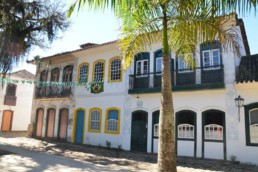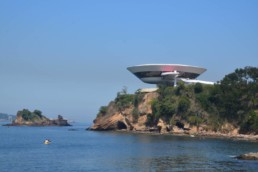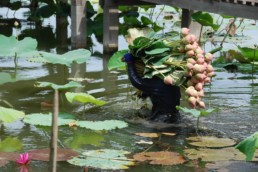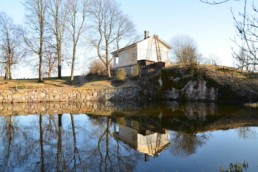We wake up this morning, fully rested and ready for our second day in Rio de Janeiro. Through the clouds, a few sun rays are timidly showing on the horizon. It is not warm enough for a day of sunbathing at the beach. We decide to postpone this idea to the next day.
After a huge, delicious breakfast at the hotel, we are on our way out. A few minutes’ walk and we reach the Cardeal Arcoverde station where we board the metro in the direction of the Lapa district.
Getting off at the Cinelandia station, soon we find ourselves at the Praça Floriano Peixoto contemplating the Teatro Municipal, an imposing building which was modelled after the Opera Garnier in Paris, and erected in the beginning of the 20th century.
We head for the famous Arcos da Lapa which are not too far.
ARCOS DA LAPA
Located between the hills of Santa Teresa and of Santo Antônio, the Arcos Da Lapa are actually a huge aqueduct which, back in the 18th century, transported water from the Rio Carioca River to the city center.
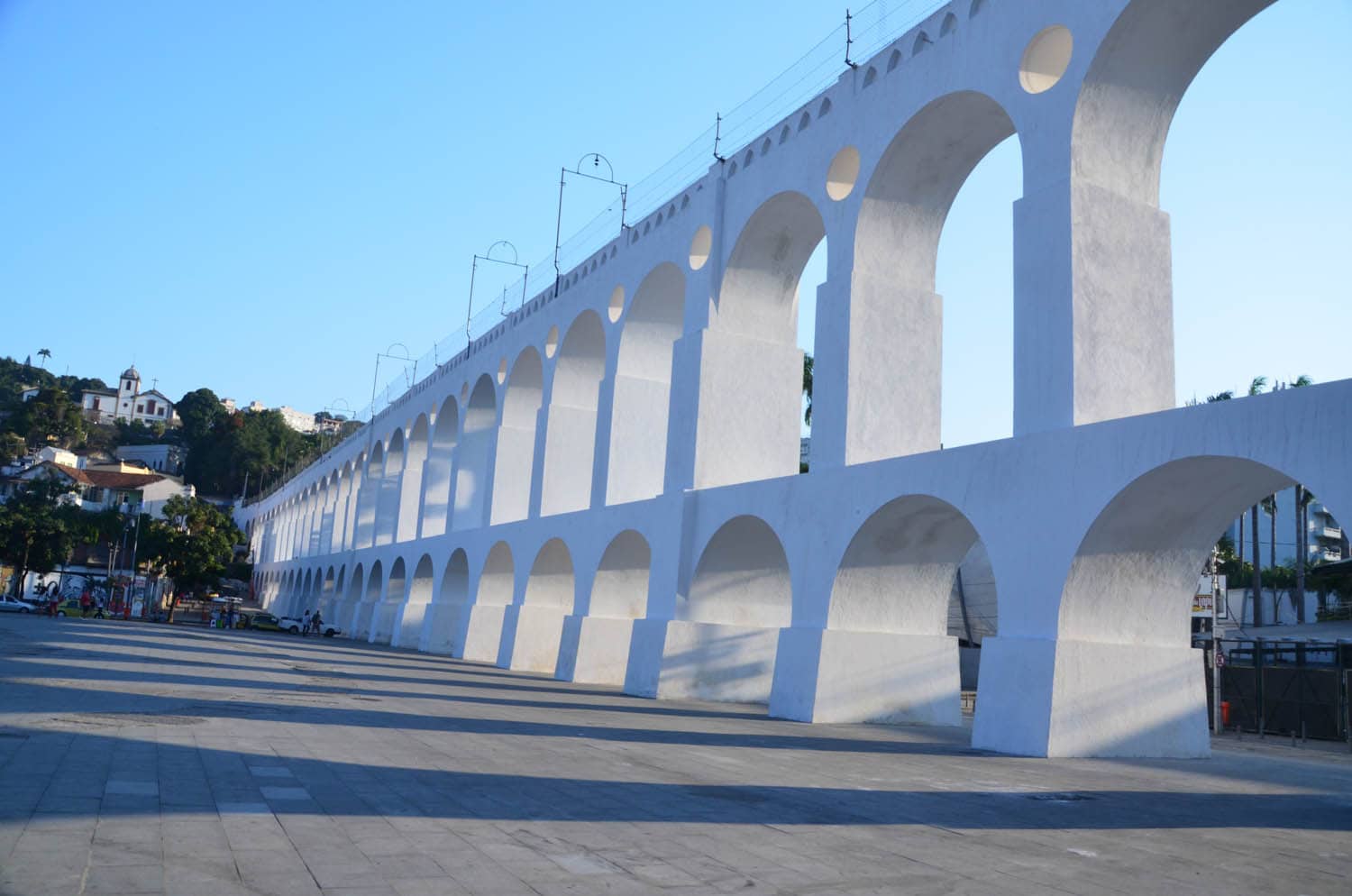
At the end of the 19th century, the aqueduct was retrofitted into tracks for the Santa Teresa streetcar which remained in operations until 2011.
The bright white arcs are very picturesque with the Santa Teresa hill in the background. The huge plaza in front provides a perfect setting for the arcs. It is the venue for many gatherings of all sorts, music concerts, and for the carnival.
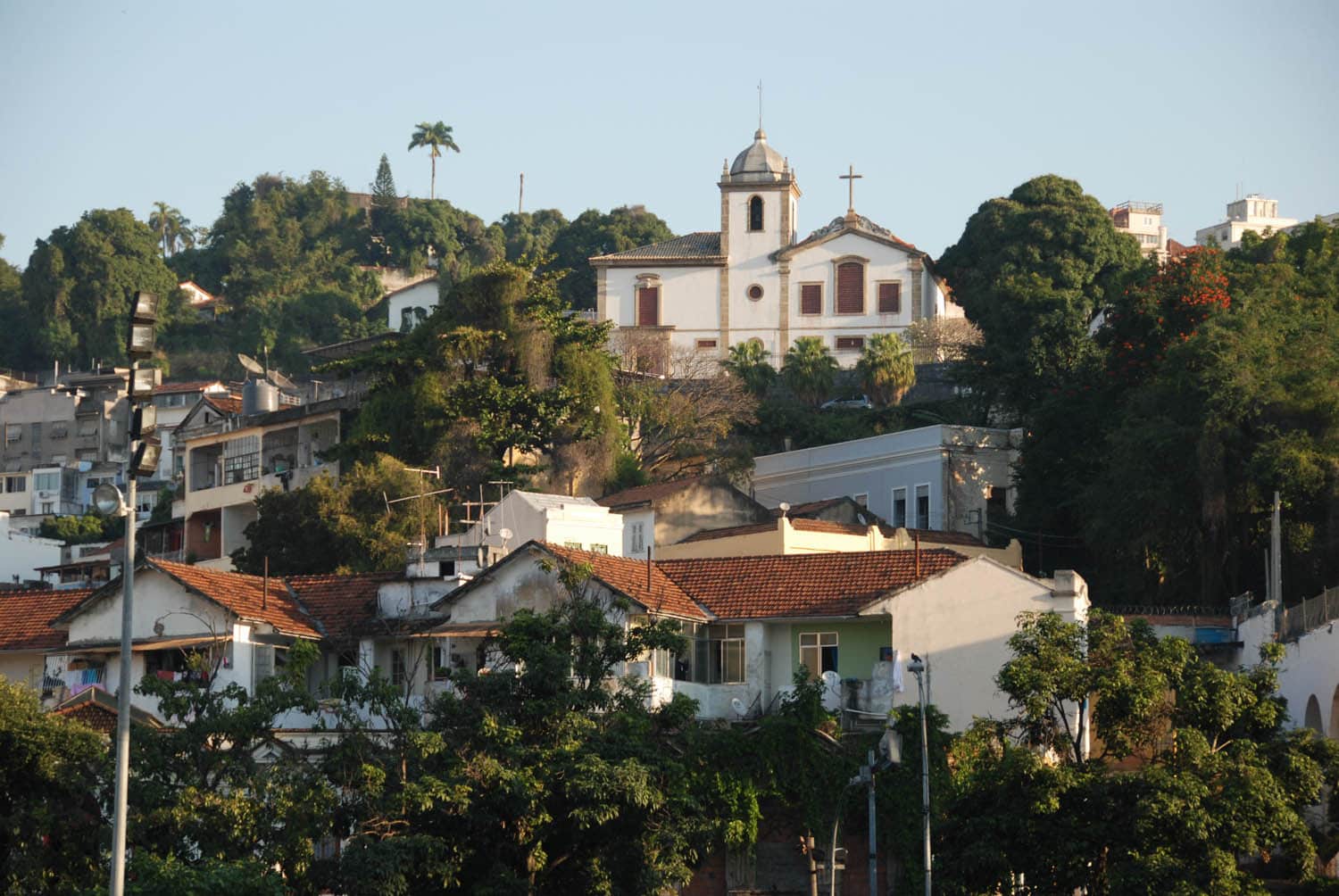
ESCADARIA SELARON
From the Arcos Da Lapa, the streets leading to the Escadaria Selaron are narrow and crooked, and almost all facades are covered with bright-color wall graffitis.
At the foot of the Santa Teresa hill, the rundown buildings are a bit surprising to us and for a minute, we wonder whether we are heading in the right direction.

On our way up here, a few people stopped us and warned us to watch carefully our bags and cameras. As it happens, I am reading the ‘’City of God’’ by Paulo Lins, an intense book which, in a vivid and crude fashion, describes the war among the gangs in the favelas of Rio de Janeiro. I cannot help but think of some of the violent depictions of the book as we make our way to Santa Teresa. A little bit worried for a second, I ask Francois to double check our map and make sure that we are in the right place. But soon we are relieved to see other tourists, and it is not long before we find ourselves at the feet of the very famous colored staircase. As it turns out, the area is quite safe. But I strongly recommend not to read the City of God before you decide to stroll around the hill of Santa Teresa!

The Escadaria Selaron is a staircase of 215 steps covered with bright-color faience tiles. It is the creation of a Chilean artist named Jorge Selaron who started this artwork in 1990 and kept working on it continuously for more than 20 years. Jorge Selaron died suddenly in January 2013.
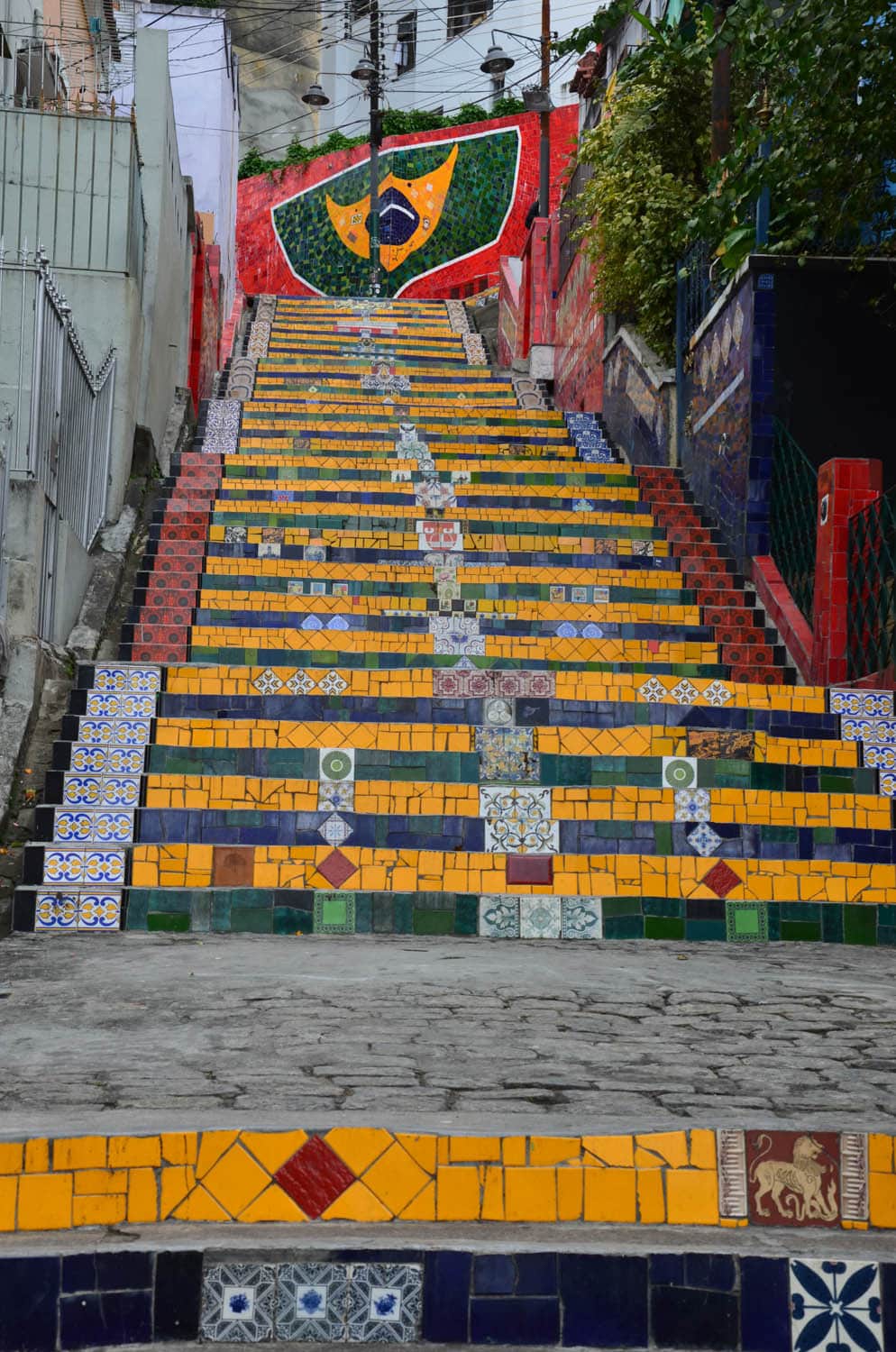
Classified as an historical monument, the artwork is a unique piece, displaying a dazzling mix of bright colors, mainly red, yellow, blue and green, and many small patches of other colors.
The tiles and azulejos come from many different countries all over the world, and if you look closely, you will find some tiles which are actually quite old.
We take our time to climb up the stairs and enjoy this fascinating piece of street art, though we must admit we did not look at every single tile!
Hard to take a photo with no tourist caught accidentally in the background, but we are patient and determined!

Once at the top of the staircase, we wonder whether to continue our way further up into Santa Teresa. After a quick family council, we decide that we will come back another day in the late afternoon in order to admire the view of the Pao de Açucar. And so we turn around and make our way down the stairs. Our plan is to walk back toward the Centro and then find a nice place for lunch.
On our way down the Santa Teresa hill, we take a second look at the many wall graffitis. From one façade to the next, it makes for an incongruous, colorful display of street art: the bay of Rio de Janeiro, the Brazilian flag, imaginary characters of all sorts, wild musicians and dancers, etc. The tags are made of bright colors and are mostly joyful.
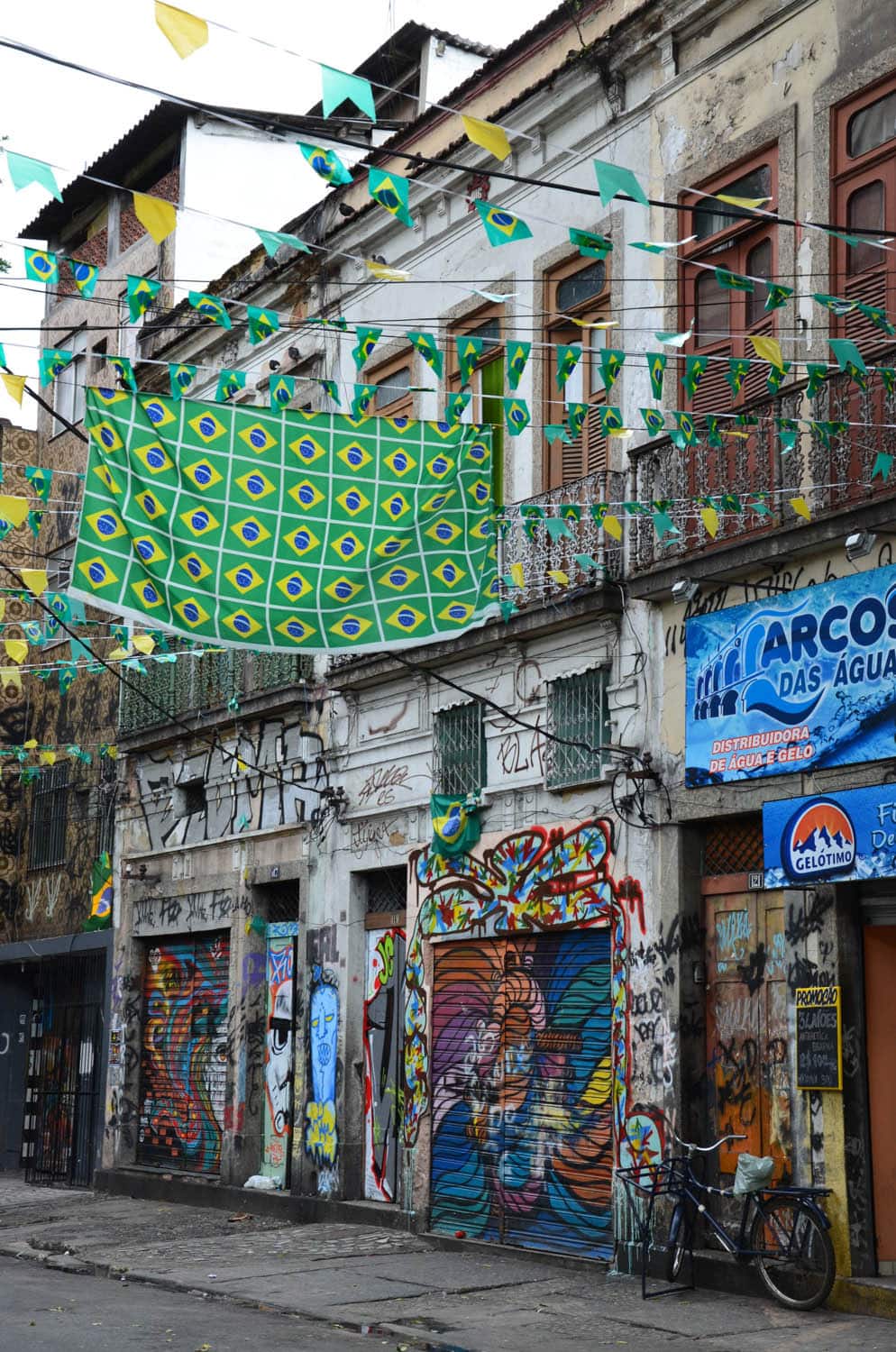
JARDIM BOTANICO
We hop again in the metro at the Cardeal Arcoverde station, and ride all the way down to the end of the line at Ipanema. From there, it is a short taxi ride to Rio’s botanic garden.
The city of Rio de Janeiro spreads over a very large area. We are used to walking all day to discover fully the cities which we visit, but here in Rio, it is a bit of a hassle because of the very long distances and also because you have to walk through many tunnels crossing the moors, which is just not pleasant. The metro is a good solution, but the grid is actually made of just a few lines and does not cover the whole city. So we will favor the taxi, which is convenient, inexpensive, and as we will find out, most drivers are willing to accept the five of us in their cabs, even though we get the feeling that it is against the law.
Created by the Portuguese at the beginning of the 19th-century, and located close to the Lagoa Rodrigo de Freitas, the Jardim Botanico is a haven of greenery and coolness right in the heart of Rio de Janeiro.
The central walkway is bordered by very tall palm trees. The garden features a wide variety of beautiful trees of all sorts as well as magnificent plants coming from every continent. The climate in Rio must be auspicious because some plants reach impressive dimensions. In between trees, you can spot the Corcovado which is actually not too far.

The water fountain at the center of the garden looks like the fountains you can find in the gardens of 18th-century castles in Europe. It is winter season in Rio, and so there are very few flowers and few birds as well. The huge water lilies, though they are not in blossom, are beautiful anyway.


The Jardim Botanico surely must provide a pleasant relief from the heat in the summer. It is now 5:30 pm and the garden is closing up for the day. Time for us to leave this nice greenery and depart for our next destination.

IPANEMA
We hail a taxi and after a short and pleasant ride, we arrive at the Ipanema Beach just after sunset.

The sky is lit with beautiful shades of purple and orange, the heavy clouds are turning from dark blue to deep grey. With the city lights along the Avenida Delfim Moreira and the hill of Vidigal further in the background, this makes for a great spectacle of lights and darkness.

Day and night, the Praia de Ipanema is just beautiful. The great song by Joao Gilberto comes to mind, of course.
“Tall and tan and young and lovely, The girl from Ipanema goes walking and When she passes, He smiles, but she doesn’t see, Ooh, but he sees her so sadly, How can he tell her he loves her, Yes he would give his heart gladly, But each day, when she walks to the sea, She looks straight ahead, not at him….”
We will have diner at Ipanema tonight. The neighborhood has on offer many nice places for lunch or dinner. Just stroll along the different streets and haphazardly you will find a restaurant for your taste.

















